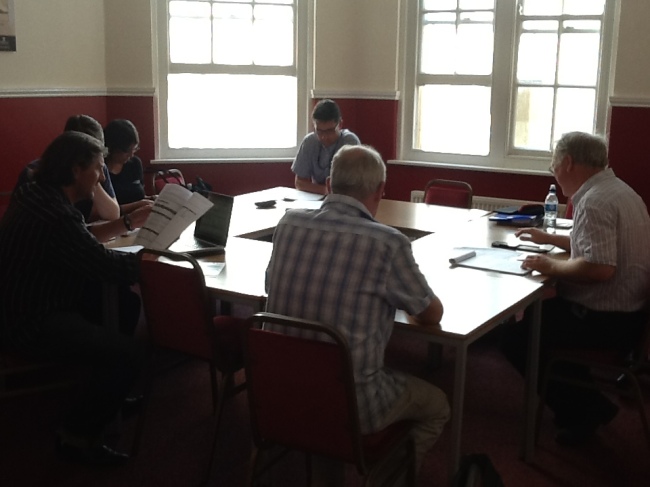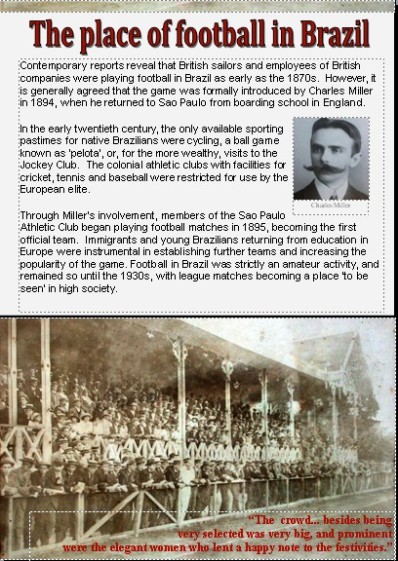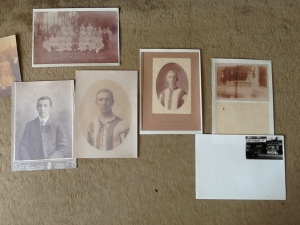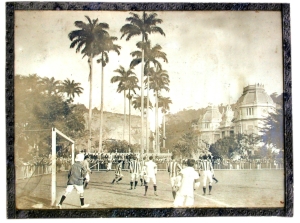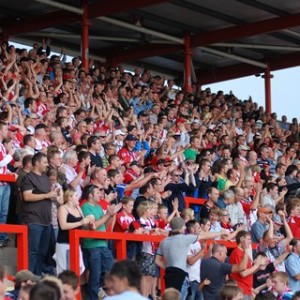Curatorial Process
The blog has been quiet lately as I’ve been writing a lot to prepare the text for the exhibition and its accompanying website, which will both be launched on the 28th November 2013. Writing for a public audience is not as easy as it first appears, and can be quite a long process with many stages.
Firstly, I divided the story I need to tell into stages, which will each be explained though a wall panel with pictures and text. The whole story: the tour arrangements, Exeter City’s experiences in Argentina, the games in Brazil, and the journey home and outbreak of World War 1, is all fascinating, but there is a difference between reading a detailed account and visiting an exhibition. When you go to visit a museum, gallery or exhibition, you’re on your feet, you may be pushed for time, and you want to look at everything and get a sense of the full picture, but you don’t want to read a book stuck up on the wall. If you wanted that much detail, you’d need more time to take it in, and you’d probably do it by reading a book in the comfort of your home with a cup of tea! So I’m working on the principle that each stage of the story needs to be bite-sized, holding the key information in just 150-200 words. I have divided the story into 11 sections (as there are 11 players on a team – seemed more appropriate than 10!)
The 11 sections which our story falls into have become:
- Introduction to ‘Have you ever played Brazil?’
- The place of football in Exeter in the early 20th century
- the place of football in Brazilian society in the early 20th century
- Tour arrangements: Exeter are invited to Argentina
- People who went on the tour
- The journey to South America and stop off in Rio where arrangements are made for Brazil games
- Games and incidents in Argentina
- The return to Brazil
- Exeter’s reception in South America
- The return journey, outbreak of WW1 and what happened to the players
- Legacy and commemorations of the game
To prepare the text takes considerable time, as it’s easy to go into too much detail, or to reduce the word-count in a way which loses some of the historical accuracy which we have aimed to establish as central to this project. Luckily I have had the help of Alison Styles who has provided a large amount of family history information related to the players and Aidan Hamilton, who is currently writing a book about the tour. Their expertise in checking and re-checking my written text is crucial as I can now be more confident that a reader will probably interpret my writing in the way it was intended, and that facts are presented correctly. What is often the case with exhibitions is that they appear to viewers as undisputed facts, so we don’t always realise that what we are reading was written by an individual or small team, and so it is very difficult to get rid of an individual perspective, and present a story or subject in a way which is absolutely true.
The final version of the text is then placed on a panel with appropriate images to illustrate the story. I am also trying to incorporate some quotes from primary sources to put some first-person voices into the information. The graphic design stage of the process is still something I’m working on, although a rough idea for one of the panels can be seen above.
In the exhibition, these panels will be accompanied by some real and replica objects and documents, and the opportunity to use i-pads to have a closer look at photographs from the match, and to access our new website. For those who want to know more, the web resource allows for a further level of information to be included. Visitors will be able to revisit the text and images from the exhibition, and find further pictures, videos and text to offer further explanation to the story. The search facility will allow fans to find information on former players, managers, grounds and memorabilia, accessing primary sources and published texts.
Of course there have been months of preparation and research which have informed the upcoming exhibition and website. However we know that as these appear in the public eye, we are bound to discover more information which will add to the story we know. Exeter City Supporters Trust are now seeking funding to expand upon the research and web development which has been done for this project, with the aim of eventually creating a resource relating to the entire history of the club. This is part of the larger ‘Grecian Voices’ project, which has a new blog to follow its development.

